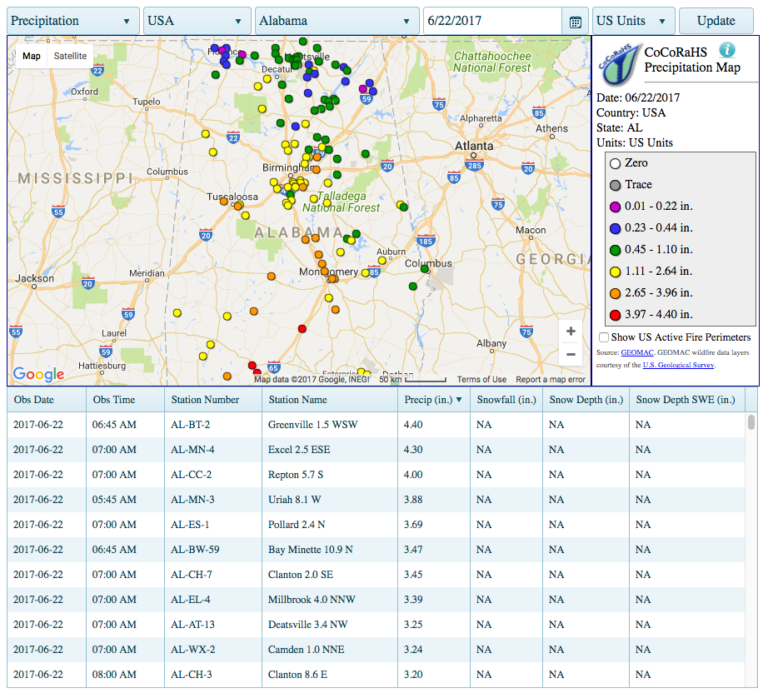

Unusually warm temperatures, reaching or exceeding 9 degrees above normal in large portions of Michigan, Wisconsin and Minnesota, also contributed to worsening dryness. Farther east, in Kentucky and the Great Lakes states, mostly or completely dry weather occurred this week, which led to mounting short-term precipitation deficits and worsening streamflows and soil moisture values. Localized heavier rains (exceeding 2 inches in spots) fell across the western reaches of the Midwest region, though large swaths of drier-than-normal weather occurred here.

Farther east in eastern Oklahoma and northern Arkansas, abnormal dryness and moderate drought were introduced or expanded in areas that have recently seen growing short-term precipitation deficits, declines in soil moisture, and lowering streamflows. The rest of Texas saw a mixture of a few improvements and degradations, as heavier precipitation amounts around the state were more spotty. Widespread improvements were made to the drought and dryness depiction in this region, where soil moisture improved and precipitation deficits lessened. Farther west, in the Texas Panhandle, northwest Oklahoma and the eastern Oklahoma Panhandle, the recent wet pattern continued, and widespread 2- to 5-inch rains fell, with localized higher amounts. Relatively dry weather occurred this week in Arkansas, Tennessee, Mississippi and east-central and northeast Oklahoma. Abnormal dryness was added or expanded in a few locations, but few large-scale changes to the USDM depiction were made outside of Florida and Virginia. Temperatures were mostly near or cooler than normal, with a few exceptions in northern reaches of Alabama and Georgia. Elsewhere across the Southeast, spotty heavy rains (locally exceeding 2 inches) fell amid mainly drier conditions. As a result, abnormal dryness increased in coverage and moderate drought was introduced in a few areas along Virginia’s border with Maryland and West Virginia. In northern Virginia, short-term precipitation deficits mounted along with decreasing streamflow and soil moisture values. Severe drought held on in some areas between Tampa and the Big Bend, where soil moisture deficits and longer-term precipitation deficits remained more severe. The above-normal precipitation amounts alleviated short-term precipitation deficits in the western Florida Peninsula and raised streamflows, leading to widespread improvement to drought conditions. Heavy rains fell in the central and southern parts of the Florida Peninsula this week, with amounts reaching or exceeding 4 inches in some areas. A few areas that saw higher precipitation amounts this week, including the fringes of the abnormally dry areas in New England, saw localized improvements out of dry conditions. Philadelphia reported its driest May on record, with only 0.24 inches of rainfall. As a result, drought and abnormal dryness expanded across much of the western half of the region, especially from western New Jersey through Pennsylvania and New York, as well as northern Virginia and eastern West Virginia. More generally over the last few weeks, especially across the western half of the Northeast, streamflows and soil moisture are very low, amid unusually hot temperatures and high evaporative demand for this time of year.

Coastal areas tended to be cooler than normal this week, with isolated spots coming in 4 to 6 degrees below normal. Temperatures were mostly above normal across the western half of the region, with localized readings ranging from 4 to 6 degrees warmer than normal. Pennsylvania, New York, Maryland, New Jersey, Delaware and southern New England saw primarily dry weather this week. Degradations were made in a few parts of western Montana and northwest Washington, where precipitation deficits mounted amid declining soil moisture and streamflow. In the West, some minor improvements occurred in parts of Nevada, Utah and Idaho, where high streamflows and large precipitation amounts from the winter into May led to a reassessment of conditions. Widespread degradations occurred in the Midwest and western portions of the Northeast, amid very dry and warm recent weather. Heavy rains in the central and southern Florida Peninsula also led to improvements to ongoing drought and abnormal dryness in the southwest Florida Peninsula. Heavy rains fell this week across some of the western parts of the Central and Southern Great Plains, especially in the Texas Panhandle and western Oklahoma and Kansas, leading to widespread improvements to ongoing drought in the western Great Plains.


 0 kommentar(er)
0 kommentar(er)
